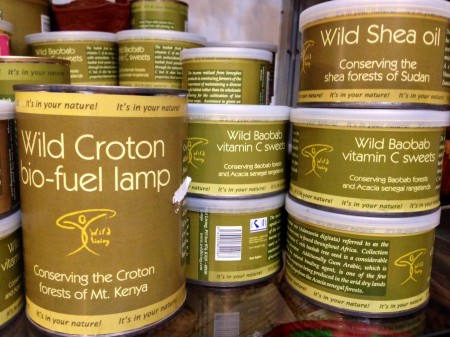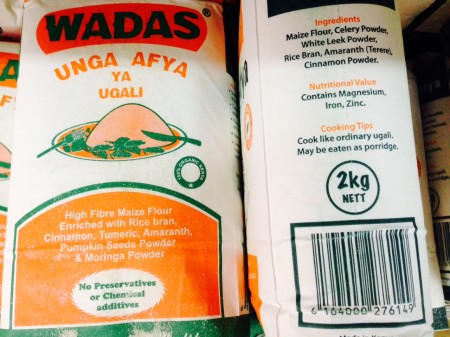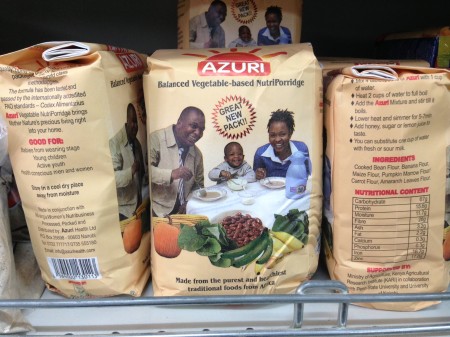- Someone you know might need to know the difference between a coconut palm and an oil palm.
- Or between English walnuts and French walnuts (and much more besides).
- Is an interactive game really the best way for children to learn about organic gardening?
- Canadian Cattlemen magazine shares a woman scientist’s deep insights into measuring biodiversity.
- And Indian priests used Konnsanchem fest to urge the revival of agrobiodiversity.
- Other Indians are restoring their land by getting rid of an interloper crop.
- DNA suggests a new ancestral home for the honeybee.
- Now I know what to do with the amaranth blocking every pavement in Rome: how to cook this prolific leafy green.
- Nominally about cider and apples, Pete Brown downs Strongbow’s communications in a few quick drafts.
Brainfood: Ethiopian wild veggies, Cold tolerant rice, Chickpea genomics, Improved tilapia, Wild cassava oil, Chinese horses, Chinese melon, Seed sampling, Tomato spp sequencing
- Wild and semi-wild leafy vegetables used by the Maale and Ari ethnic communities in southern Ethiopia. 30 of them.
- Collection and Conservation of Cold Adapted Indigenous Rice Landraces from Western Ghats, South India. 56 of them.
- Exploring Germplasm Diversity to Understand the Domestication Process in Cicer spp. Using SNP and DArT Markers. 3 populations among domesticated types; more diversity in the wilds.
- Genetically-Improved Tilapia Strains in Africa: Potential Benefits and Negative Impacts. Mean present value of introducing an improved strain to Ghana is 1% of GDP, but you could get same with better management. Both would of course be best.
- Diversity in oil content and fatty acid profile in seeds of wild cassava germplasm. Some species could be oil crops.
- The Study of Genetic Diversity and Phylogenetic Evolution in Indigenous Horses (Equus caballus) of Gansu. If I understand the abstract correctly, this suggests, among other things, that some local horse breeds can be traced back to Przewalski’s Horse, maybe.
- Microsatellite Diversity, Population Structure, and Core Collection Formation in Melon Germplasm. In China. Frankly not nearly as interesting as the horse story.
- Optimal sampling of seeds from plant populations for ex-situ conservation of genetic biodiversity, considering realistic population structure. 25–30 individuals per population from few but widely-spaced populations.
- Exploring genetic variation in the tomato (Solanum section Lycopersicon) clade by whole-genome sequencing. 20x more diversity in the wilds than the cultivated, correlated with habitat.
- Understanding Sustainable Diets: A Descriptive Analysis of the Determinants and Processes That Influence Diets and Their Impact on Health, Food Security, and Environmental Sustainability. The determinants of sustainability are agricultural, health, sociocultural, environmental and socioeconomic, and fiddling with one to improve it may screw up another.
- Anchoring durum wheat diversity in the reality of traditional agricultural systems: varieties, seed management, and farmers’ perception in two Moroccan regions. Farmers grow both improved varieties and landraces, the latter mainly for their quality characteristics.
- Unraveling the nexus between water and food security in Latin America and the Caribbean: regional and global implications. Production has increased, but at the cost of the natural capital of the region, and nutritional problems persist.
Baobab, frankincense and croton: private sector brings gifts

Found these in an up-market curio shop in Nairobi’s Yaya Centre shopping centre. I’ve never come across Wild Living before, but they sound like an interesting outfit, doing some serious value addition to local products by the look of it:
From Baobab and Shea to Leleshwa and Acacia frankinsense forest oils, East Africa, the cradle of mankind, hosts a remarkable diversity of unique natural resources that have provided succour and health during the majority of our evolution.
Whilst traditionally used, the natural benefits of these products, have until now, been unavailable to the global market. Furthermore, Africa’s potential to produce conservation and livelihoods products for its own development has remained unclaimed.
Wild Living realizes this potential by providing a market for over twenty community based projects located throughout East Africa who are being assisted by partner organizations such as WWF and OXFAM to sustainably and ethically produce natural products.
Wild Living publicises the conservation and livelihoods benefits of each of these producers products and through increased sales revenue assists them to continue conserving their unique natural resources whilst building their own lives in a dignified and self-sufficient manner.
Revenues realized by Wild Living through the sale of its brand are used to assist partners in the ethical and sustainable production of goods whilst providing access into an increasingly conscientious consumer market.
Anyone know anything more about them? Are they on the level? In any case, something else to add to those baobab fact sheets.
Nibbles: Frankincense, Stevia, Market forces
Busy? I should say so. And major kudos to Luigi for shouldering the burden. In the process of declaring RSS bankruptcy this morning, just four items seemed both timely and worthwhile. So here goes nothing:
- Harvesting frankincense robs the trees, so at least do it right.
- If Coke with Stevia is Coke Life, Alun Salt points out, then regular Coke must be, er, … better tasting?
- Folk keep telling developing-country farmers to hook up with local markets, now English allotmenteers are doing the same. H/t CRF.
- And if it’s market apostasy you’re after, how about Raising food prices to end hunger?
Totally terere
The launching of FAO’s Traditional Crop of the Month with amaranth, just announced on Twitter, reminds me that I was going to post a couple of photos showing how much the crop is being used nowadays in Kenya. These show that terere leaves are used — along with other stuff — to fortify maize meal, which is used to make ugali, the main staple food around here for many people. I took the pix in a supermarket in Lavington, an upscale residential area, and they represent two different brands of unga. Just look under ingredients.

